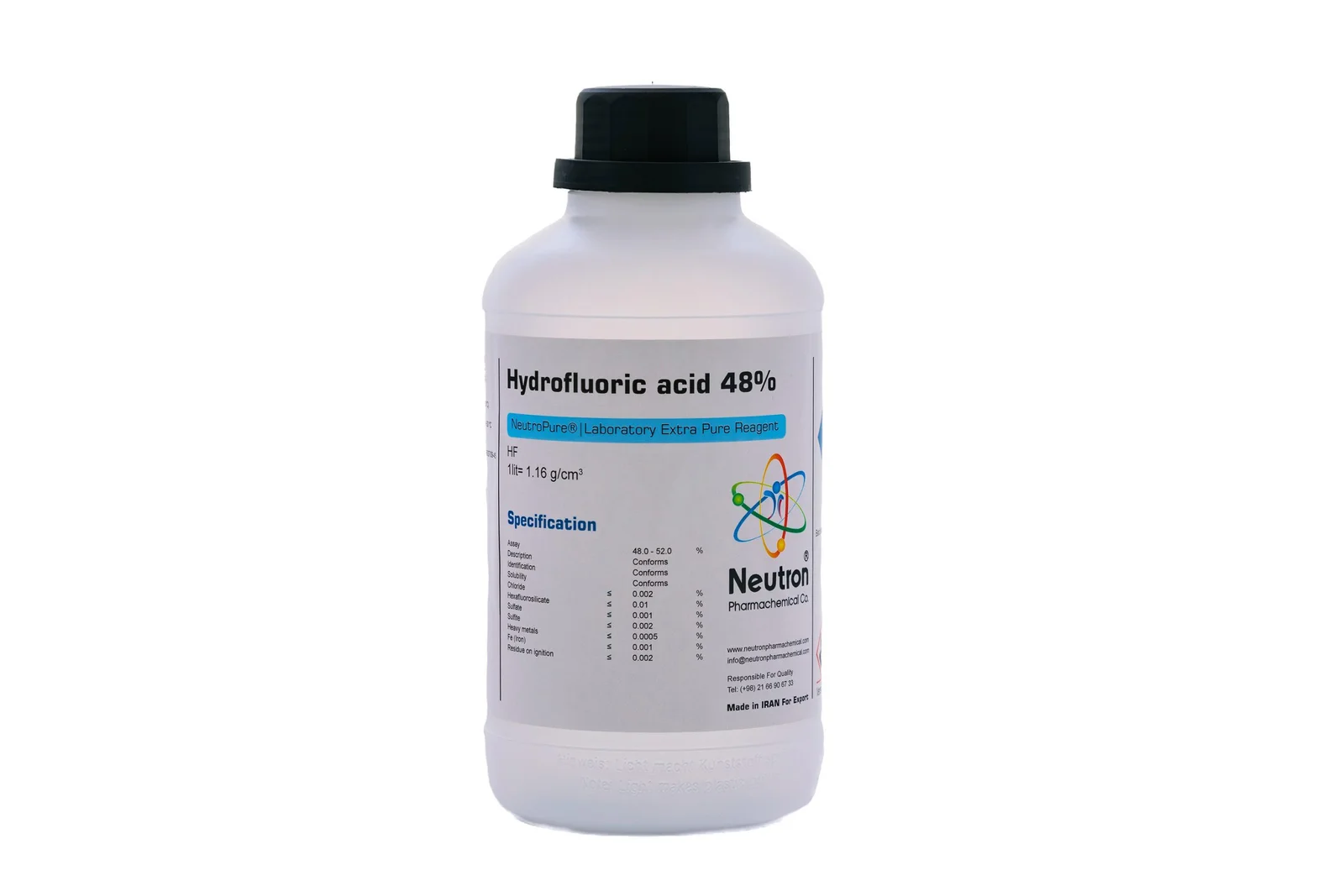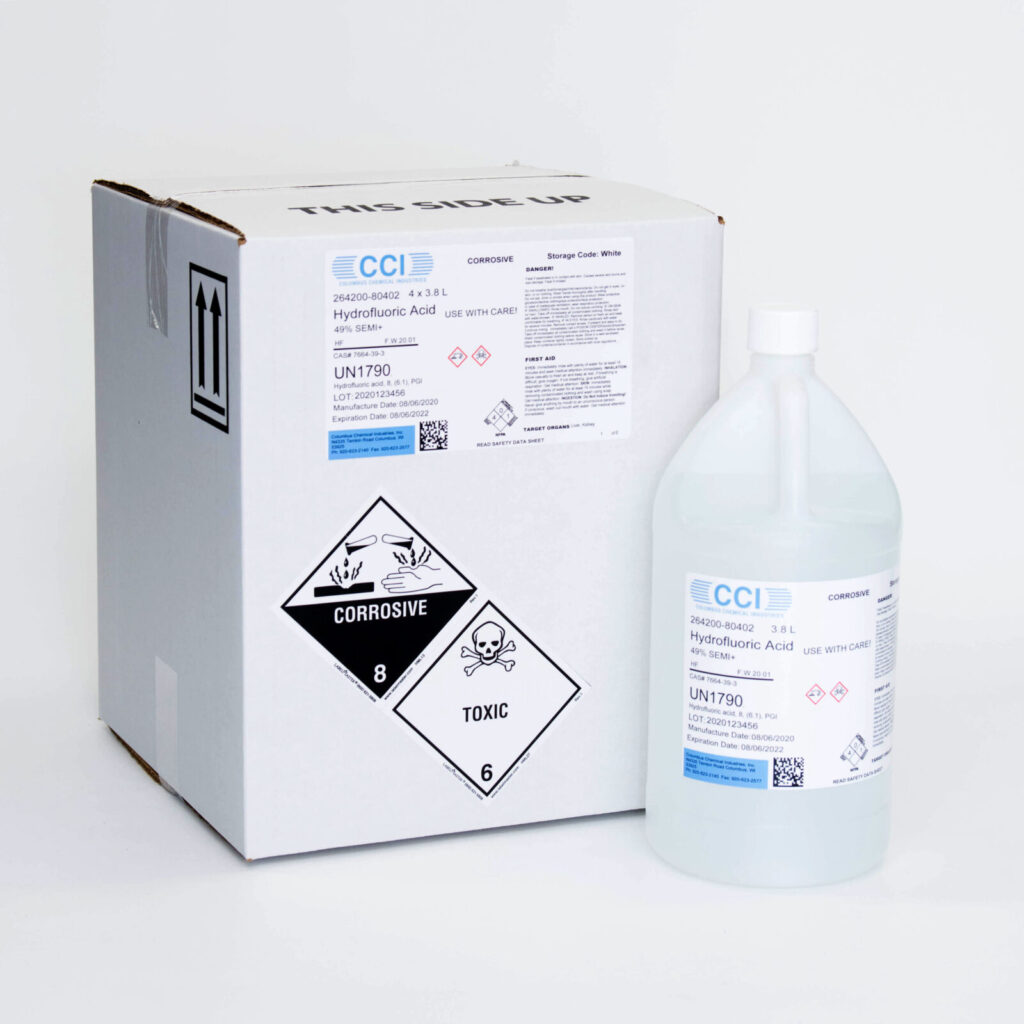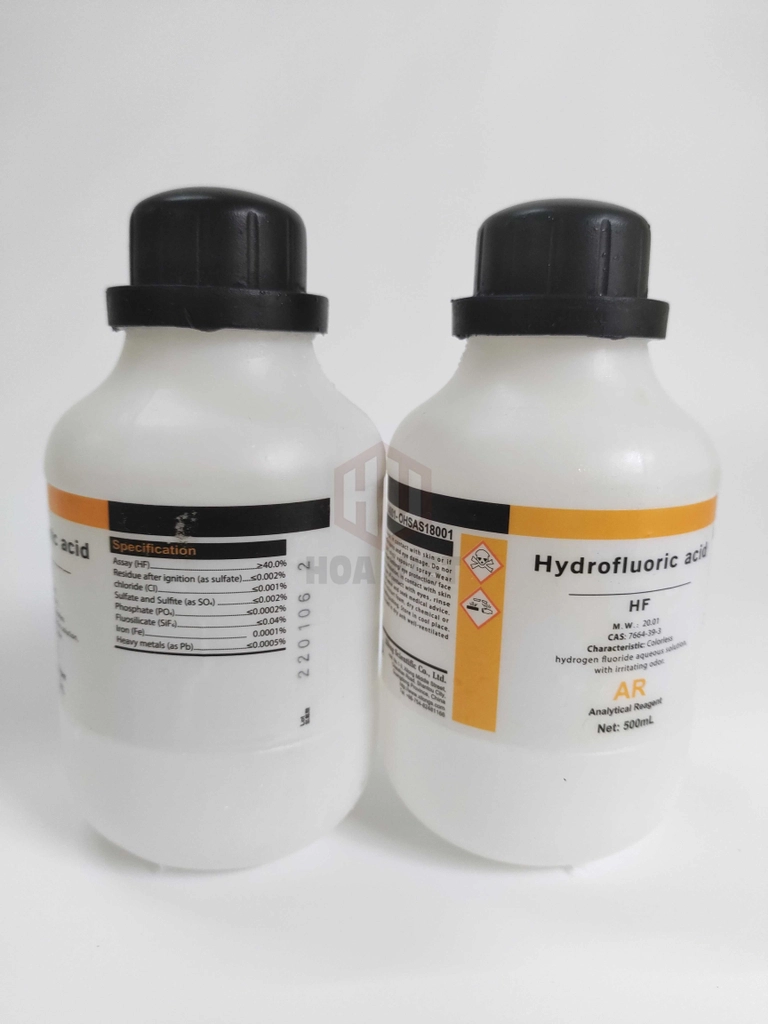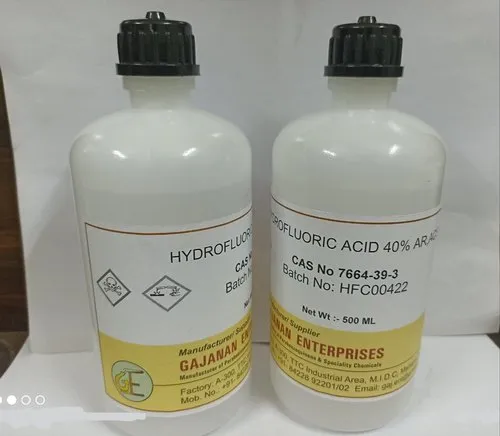Description
Hydrofluoric Acid (HF): A Powerful Chemical with a Dangerous Reputation
Hydrofluoric acid (HF) is an aqueous solution of hydrogen fluoride (HF), a chemical compound known for its unique properties and potential hazards. While widely used in various industries, its corrosive nature demands extreme caution and specific safety protocols. Understanding HF’s characteristics, applications, and risks is crucial for those who handle or work around it.
What is Hydrofluoric Acid?
HF is a colorless solution that can exist as a gas or a liquid. Unlike other hydrohalic acids like hydrochloric acid (HCl), hydrobromic acid (HBr), and hydroiodic acid (HI), HF is a weak acid. This seemingly contradictory property arises because HF in solution does not fully dissociate into hydrogen ions (H+) and fluoride ions (F-). Instead, it tends to form hydrogen-bonded clusters, which reduces the availability of free H+ ions.
Despite being a weak acid in terms of dissociation, HF is highly corrosive and dangerous. Its toxicity stems primarily from the fluoride ion, which readily penetrates the skin and tissues.
Key Properties:
- Corrosive: HF readily dissolves many materials, including glass, metals, and certain plastics.
- Penetrating: Fluoride ions easily penetrate skin and tissue, causing deep and potentially fatal burns.
- Systemic Toxicity: Fluoride ions interfere with calcium metabolism, leading to hypocalcemia, cardiac arrhythmias, and other systemic effects.
- Weak Acid: HF is a comparatively weak acid in water, meaning it does not fully dissociate.
- Volatility: Hydrogen fluoride gas, which is released from HF solutions, is highly irritating to the respiratory system.
Applications of Hydrofluoric Acid:
HF’s unique properties make it valuable in a wide array of industrial applications:
- Etching Glass: HF is commonly used to etch glass, creating frosted finishes, decorative patterns, and even calibrating laboratory glassware.
- Metal Cleaning and Pickling: It removes rust and scale from metals, preparing surfaces for further processing or coatings.
- Semiconductor Manufacturing: HF is vital in cleaning and etching silicon wafers during the production of integrated circuits.
- Petroleum Refining: HF acts as a catalyst in alkylation processes used to produce high-octane gasoline components.
- Research and Analysis: It is used in laboratory settings for specialized chemical reactions and analysis.
- Cleaning Products: HF is found in some specialized cleaning products designed to remove rust and mineral deposits.
Dangers and Safety Precautions:
The dangers associated with HF exposure are significant and require stringent safety protocols:
- Severe Burns: HF burns are notoriously painful and can be deceptively slow to appear. Even dilute solutions can cause severe tissue damage.
- Systemic Toxicity: Fluoride ions rapidly bind to calcium, disrupting vital bodily functions. Untreated exposure can lead to cardiac arrest and death.
- Respiratory Irritation: Inhalation of HF fumes can cause severe respiratory distress and pulmonary edema.
- Eye Damage: Contact with HF can cause severe damage to the cornea and potentially blindness.
Due to these hazards, the following safety precautions are critical when working with HF:
- Proper Personal Protective Equipment (PPE): This includes acid-resistant gloves (typically made of neoprene or butyl rubber), face shields, eye protection, and appropriate clothing.
- Ventilation: Work areas must be well-ventilated to prevent the accumulation of HF fumes. Ideally, operations should be performed in a fume hood.
- Emergency Preparedness: Individuals working with HF must be properly trained in first aid procedures and know the location of calcium gluconate gel, which is an antidote for HF skin exposure. Immediate medical attention is crucial for all HF exposures.
- Safe Handling and Storage: HF should be stored in tightly sealed, non-reactive containers in a cool, well-ventilated area away from incompatible materials. Proper labeling is essential.
- Dilution Procedures: When diluting HF, always add acid to water slowly and with constant stirring to prevent heat buildup and potential splashing.
First Aid for HF Exposure:
Immediate and appropriate first aid is critical in the event of HF exposure:
- Skin Contact: Immediately flush the affected area with copious amounts of water for at least 15 minutes. Apply calcium gluconate gel to the affected area and seek immediate medical attention.
- Eye Contact: Immediately flush the eye with copious amounts of water for at least 15 minutes and seek immediate medical attention.
- Inhalation: Move the victim to fresh air and seek immediate medical attention.
- Ingestion: Do not induce vomiting. Seek immediate medical attention.
Conclusion:
Hydrofluoric acid is a valuable chemical with diverse applications across various industries. However, its corrosive nature and systemic toxicity demand utmost respect and adherence to strict safety protocols. Understanding the properties, dangers, and appropriate handling procedures is paramount for protecting workers and preventing potentially fatal accidents. Proper training, PPE, and emergency preparedness are essential for ensuring the safe use of this powerful chemical.














Reviews
There are no reviews yet.